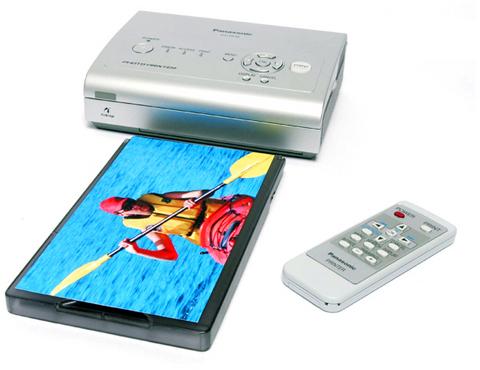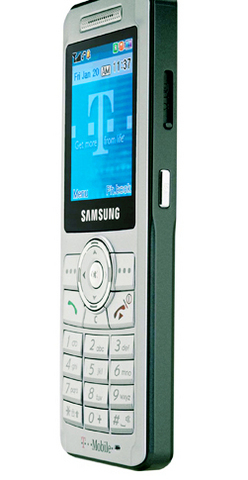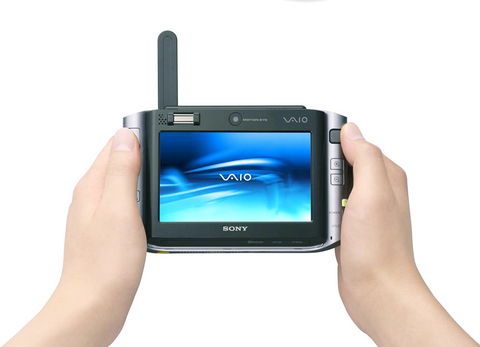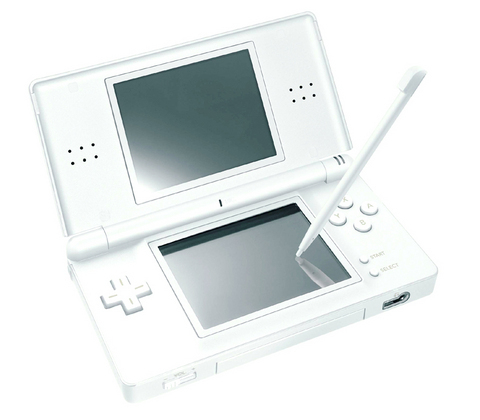A TWEAKED AND BRIGHTENED VERSION OF THE NINTENDO DS
Nintendo raised eyebrows two years ago when it introduced a peculiar two-screened hand-held game player, the Nintendo DS. Some called it an experiment and doubted if thumb-twitching gamers would adapt to a pen-based interface.
By now all doubts have vanished -- as was demonstrated by the release in the US of the Nintendo DS Lite on Sunday. Nintendo's ugly duckling has grown up into a sleek white swan, backed by 142 software titles that use wireless game sharing, pen scribbling and speech recognition features, as well as child-friendly themes like Pokemon and Nintendogs. You can even play 900 older Game Boy Advance cartridges on the US$130 machine. By comparison, the Sony PSPs library of 149 titles slants toward traditional shooters and sports simulations.

PHOTOS: NY TIMES
Game play is no different on the new version, however, and all the changes are cosmetic. These include a smaller form, fatter stylus, sliding PSP-like power switch and an even smaller power plug than last fall's Game Boy Micro. The thing you notice the most, however, are the clear, much brighter screens, which Nintendo hopes will soon be illuminating darkened buses, pup tents, minivans and bedrooms nationwide.
YES, YOU CAN EDIT YOUR PHOTOS. BUT YOU NEEDN'T
There are a million ways to tweak digital photos when printing at home -- which is precisely why some people shy away from it.

For them, Panasonic made the basic KX-PX10M Digital Photo Printer. Printing a photo requires just two button clicks.
About the size of a thick novel, the KX-PX10M prints with rich color and detail on 10-by-15cm sheets that resist tearing and are nearly impervious to water.
The printer, available later this month for US$200, includes a remote control and a video cable for connecting to a TV, letting you select photos on the screen.

The system can also edit effects, like giving a photo the look of an oil painting or converting it to black and white. For enthusiastic tweakers, more sophisticated controls adjust contrast, sharpness, and color levels.
To edit, you must insert a camera's SD or MMC memory card into a slot on the printer.
Most consumer cameras use these formats, but several companies -- including Fuji, Olympus, and Sony -- use different card types. You can connect those cameras to the printer with a USB cable.

MOBILE PHONES, IT SEEMS, CAN'T BE TOO THIN
If thin is in, then the Samsung T509 could not be much hipper. This wafer of a phone -- 0.96cm thick and just under 85g -- could slip into the pocket of your tightest pair of jeans without leaving a bump.
Samsung clearly designed the T509 to challenge the Motorola Razr on its skinny cell phone turf. But T509 is made of sturdy silver plastic, not metal, so it feels like a toy until it is turned on and taking calls.
The phone can play MP3s and other music files, and its camera can take still images and video. The T509 has mobile Internet connectivity and accepts wireless Bluetooth headsets. It also acts as a speakerphone and can record short voice messages. The battery has a talk time of about three hours and a standby time of about seven days.
A welcome feature is a sliding door to hide the charging port, keeping dirt away from the works.
A PC THAT GOES BEYOND MINI AND MICRO TO LILLIPUTIAN
Those who demand standard keyboards and mice on their PCs may prefer to skip this device. Sony has miniaturized all of the usual components on its way to making the Vaio UX Micro one of the smallest portable computers in the world.
The UX Micro, which will be available online and in stores for US$1,800 in about a month, uses Intel's new Core Solo Ultra Low Voltage processor for standard PC performance in a 544g package.
It runs Windows XP Professional and has a 4.5-inch touch screen as well as a small fold-out keyboard for text entry.
The PC also has built-in Wi-Fi. A built-in fingerprint scanner can lock up passwords and important data.There is a 1.3-megapixel camera on the back and another camera on the front, with a microphone, for video calls.
Less futuristically, the UX Micro comes standard with a 30-gigabyte hard drive and has a battery life of about 2.5 hours.
The question is how to avoid mashing all those little keys when typing. The best way, apparently, is to peck away with your thumbs. It's the price to be paid for entering the 21st century.
SURF SAFELY AT CYBERCAFES: BRING YOUR OWN DESKTOP
New flash drives from Lexar will come with software that lets you carry a virtual copy of your home computer in your pocket and surf the Web securely through other Windows machines.
Plug in a flash drive with the software, called PowerToGo, when you are on the road and the computer will show you a desktop that looks just like yours at home. Your personal programs, buddy list, e-mail profile and preferences are all available.
The PowerToGo software can run programs directly from the flash drive as if it were run from the host computer's main drive.
But it also saves storage space on the drive by using programs commonly found on host computers, like Internet Explorer and Microsoft Office, and superimposing your personal settings. All logs and temporary files are saved to the flash drive, leaving no traces on the host computer.
The program will be included on Lexar Lightning drives starting early next month. The 1-gigabyte Lightning sells for around $100 and the 2-gigabyte is $160. The drives will be available through www.lexar.com and from major retailers.
The software works with more than 100 tested Windows programs, but to use one that is not on the list, you will have to pay US$30 extra for the "install-anything installer" after a free trial period.

May 18 to May 24 Pastor Yang Hsu’s (楊煦) congregation was shocked upon seeing the land he chose to build his orphanage. It was surrounded by mountains on three sides, and the only way to access it was to cross a river by foot. The soil was poor due to runoff, and large rocks strewn across the plot prevented much from growing. In addition, there was no running water or electricity. But it was all Yang could afford. He and his Indigenous Atayal wife Lin Feng-ying (林鳳英) had already been caring for 24 orphans in their home, and they were in

On May 2, Chinese Nationalist Party (KMT) Chairman Eric Chu (朱立倫), at a meeting in support of Taipei city councilors at party headquarters, compared President William Lai (賴清德) to Hitler. Chu claimed that unlike any other democracy worldwide in history, no other leader was rooting out opposing parties like Lai and the Democratic Progressive Party (DPP). That his statements are wildly inaccurate was not the point. It was a rallying cry, not a history lesson. This was intentional to provoke the international diplomatic community into a response, which was promptly provided. Both the German and Israeli offices issued statements on Facebook

Even by the standards of Ukraine’s International Legion, which comprises volunteers from over 55 countries, Han has an unusual backstory. Born in Taichung, he grew up in Costa Rica — then one of Taiwan’s diplomatic allies — where a relative worked for the embassy. After attending an American international high school in San Jose, Costa Rica’s capital, Han — who prefers to use only his given name for OPSEC (operations security) reasons — moved to the US in his teens. He attended Penn State University before returning to Taiwan to work in the semiconductor industry in Kaohsiung, where he

President William Lai (賴清德) yesterday delivered an address marking the first anniversary of his presidency. In the speech, Lai affirmed Taiwan’s global role in technology, trade and security. He announced economic and national security initiatives, and emphasized democratic values and cross-party cooperation. The following is the full text of his speech: Yesterday, outside of Beida Elementary School in New Taipei City’s Sanxia District (三峽), there was a major traffic accident that, sadly, claimed several lives and resulted in multiple injuries. The Executive Yuan immediately formed a task force, and last night I personally visited the victims in hospital. Central government agencies and the